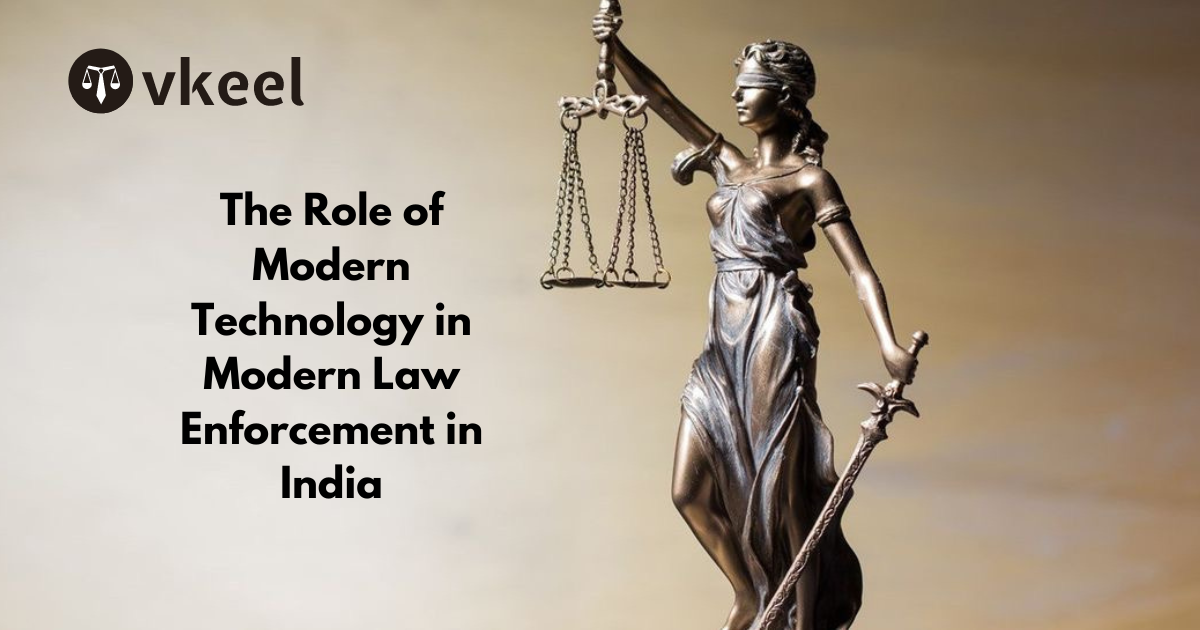The Role of Modern Technology in Modern Law Enforcement in India
By Himanshu Kumar
Table of Contents
Introduction
Law enforcement has always been a crucial pillar of any functioning society. In India, the integration of modern technology into policing practices has revolutionized the way law enforcement operates. This transformation has been driven by the need to enhance efficiency, ensure public safety, and maintain law and order in a rapidly evolving technological landscape.
The landscape of law enforcement has transformed dramatically over the past few decades, largely due to advancements in technology. Modern technology has become an indispensable tool in the arsenal of law enforcement agencies, enhancing their capabilities to prevent, detect, and solve crimes.
Historical Background
The history of law enforcement in India dates back to ancient times, with roots in the Maurya and Gupta empires where policing was primarily a local affair. The British colonial period saw the establishment of a more structured police system, notably with the enactment of the Police Act of 1861, which laid the foundation for modern policing in India. Post-independence, the Indian police force faced numerous challenges, including outdated methods, corruption, and a lack of resources. However, the late 20th and early 21st centuries marked a significant shift as technology began to permeate various aspects of policing.
Objectives of Integrating Technology in Law Enforcement
- Enhanced Efficiency: Technology streamlines administrative tasks, reduces paperwork, and allows for better resource allocation.
- Improved Public Safety: Advanced surveillance and communication systems enable faster response times and proactive crime prevention.
- Transparency and Accountability: Digital records and body-worn cameras enhance accountability and reduce instances of misconduct.
- Data-Driven Policing: Big data and analytics provide insights for strategic planning and crime pattern analysis.
- Community Engagement: Social media and mobile apps facilitate better communication and cooperation between the police and the community.
Modern Technologies in Law Enforcement
- Surveillance Systems: CCTV cameras, drones, and automated license plate recognition systems have become ubiquitous in urban areas. These tools assist in monitoring public spaces and identifying suspects.
- Forensic Technologies: DNA profiling, automated fingerprint identification systems (AFIS), and digital forensics have revolutionized crime investigation by providing reliable evidence.
- Communication Systems: Advanced communication tools such as digital radios, mobile apps, and centralized control rooms improve coordination among law enforcement agencies.
- Data Analytics and AI: Predictive policing algorithms analyze vast amounts of data to forecast crime hotspots and allocate resources efficiently.
- Cybersecurity: With the rise in cybercrimes, specialized cybercrime units equipped with sophisticated tools and software are essential for investigating and preventing digital offenses.
- Body-Worn Cameras: These devices have been introduced to record police interactions with the public, promoting transparency and accountability.
Case Laws Influencing Technological Integration
Several landmark cases have underscored the importance of integrating technology in law enforcement:
- Prakash Singh v. Union of India (2006): This case led to police reforms emphasizing the need for modernizing the police force, including the adoption of new technologies.
- State of Maharashtra v. Praful B. Desai (2003): The Supreme Court ruled that video conferencing could be used to record witness statements, highlighting the judiciary’s openness to technological advancements.
- Shreya Singhal v. Union of India (2015): This case, which dealt with the regulation of online speech and cyber laws, highlighted the necessity of having robust technological frameworks to address new-age crimes.
- Justice K.S. Puttaswamy (Retd.) and Anr. vs Union Of India And Ors. (2017): The landmark judgment on the right to privacy also impacted the use of technology in surveillance and data collection by law enforcement agencies, stressing the need for a balance between security and individual privacy.
Legislative Amendments Facilitating Technological Integration
Several legislative measures have been enacted to support the integration of technology in law enforcement:
- Information Technology Act, 2000 (IT Act): This act provides a legal framework for electronic governance and addresses cybercrime. Amendments in 2008 introduced stringent penalties for cyber offenses.
- Criminal Procedure Code (Amendment) Act, 2008: This amendment allows the use of electronic records and digital evidence in legal proceedings, facilitating the adoption of forensic and digital investigation methods.
- DNA Technology (Use and Application) Regulation Bill, 2019: Though still pending, this bill aims to regulate the use of DNA technology for identifying individuals in criminal investigations and judicial proceedings.
- The Aadhaar (Targeted Delivery of Financial and Other Subsidies, Benefits and Services) Act, 2016: While primarily for welfare schemes, Aadhaar data has been leveraged for law enforcement purposes, though with strict regulations following the Puttaswamy judgment.
- The Personal Data Protection Bill, 2019: This proposed legislation aims to protect individual privacy while allowing the use of personal data for legitimate state purposes, including law enforcement.
Challenges and Concerns
Despite the benefits, the integration of technology in law enforcement comes with challenges:
- Privacy Concerns: The increased use of surveillance and data collection technologies raises significant privacy issues. Balancing security with individual rights is a complex task.
- Cybersecurity Threats: As law enforcement agencies become more reliant on technology, they also become targets for cyber-attacks. Ensuring robust cybersecurity measures is crucial.
- Resource Constraints: Implementing advanced technologies requires substantial financial investment and training, which can be a constraint for many states and local police forces.
- Legal and Ethical Issues: The use of AI and data analytics must be regulated to prevent biases and ensure ethical practices.
- Public Trust: For technology-driven law enforcement to be effective, there must be public trust in these systems. Transparency and community engagement are essential to build this trust.
Conclusion
The integration of modern technology in law enforcement in India represents a significant step towards more efficient, transparent, and effective policing. While the historical context shows a long evolution, the contemporary landscape is characterized by rapid advancements and innovative approaches. Case laws and legislative amendments have played pivotal roles in shaping the current framework, ensuring that technology is harnessed in ways that uphold justice and public safety. However, addressing the accompanying challenges, particularly those related to privacy and ethics, remains crucial for the continued success of technology-driven law enforcement in India. As technology continues to evolve, so too must the strategies and frameworks guiding its use in the realm of law enforcement.
Disclaimer:
The information provided in the article is for general informational purposes only, and is not intended to constitute legal advice or to be relied upon as a substitute for legal advice. Furthermore, any information contained in the article is not guaranteed to be current, complete or accurate. If you require legal advice or representation, you should contact an attorney or law firm directly. We are not responsible for any damages resulting from any reliance on the content of this website.










